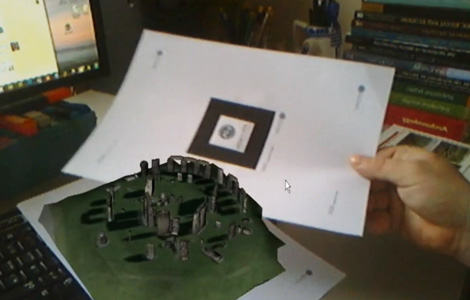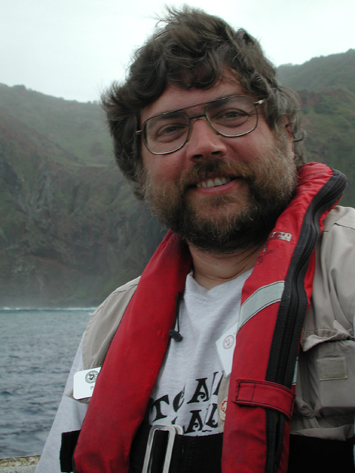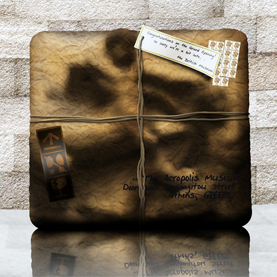Throughout the ages theyve survived intense battles, powerful natural disasters, adverse weather and incompetent archaeologists. Fascinating, beautiful, but surprisingly fragile, ancient sites are now under a new kind of attack mass tourism. Gone are the days of the Victorian explorer discovering magnificent ancient sites half buried by sand or jungle. Cheap airfares together with a plethora of guide and travel books, not to mention the Internet, encourage us to follow in the footsteps of historical figures and see ancient sites for ourselves or, in some cases, take advantage of the sunny weather and cheap booze – with a bit of…
-
-
Augmented Reality (AR) seemed a pipe dream not long ago, but today you’ll find AR Japanese girlfriends (no kidding), pets – or ‘Petz’ – for your kids, tattoos, travel applications (read:iPhone or Android-based systems). In fact fighter pilots have been using it for ages (head-up displays for navigational purposes, not Japanese girlfriends, of course). But I must say this is the first ‘AR Stonehenge’ I’ve come across. Take a look at the video below – I’m sure you’ll agree it’s pretty impressive. Augmented Reality – a reality in which virtual, computer-generated images overlay the physical environment, and thus enhance it…
-
Where is Atlantis? Ever since Plato mentioned the existence of the fabled island-city in the 4th century BC, archaeologists, historians and adventurers have spent much time and ink trying to chase down its origins. “Now in this island of Atlantis there was a great and wonderful empire which had rule over the whole island and several others, as well as over parts of the continent, and, besides these, subjected the parts of Libya within the columns of Heracles as far as Egypt, and of Europe as far as Tyrrhenia.” – From Plato’s Timaeus – Translation by Benjamin Jowett One of…
-
Dr Paul G Bahn Distinguished archaeologist and author Dr Paul G Bahn is a distinguished archaeologist, and a prolific writer and broadcaster on archaeology, prehistoric art and early man. In 2003 and 2004, he led the team that discovered Britain’s first Ice Age cave art at Creswell Crags in Nottinghamshire. He holds a PhD from Cambridge, conducting his thesis on the prehistory of the French Pyrénées. He is a fellow of the Society of Antiquaries, and a member of various international organisations, including the Société Préhistorique Française and a variety of rock art research associations. He is also a contributing…
-
One of the biggest archaeological discoveries ever made in China landed in America earlier this year. A trio of Tarim Mummies was brought to the United States for the first time in a special exhibit at the Bowers Museum in Santa Ana, California. The mummies are renowned for their unique appearance: while the ancient bodies were found well-preserved in Chinas western region, some of them bear more of a physical resemblance to early Europeans. People will have until July 25 to view the ancient bodies, but the American public will have two more chances to view the exhibit later this…
-
Prehistoric cave painters in the Sahara Desert gave rise to ancient Egyptian civilisation, according to a German archaeological team. The paintings in a caves in Gilf Kebir, a vast sandstone plateau near the Egyptian-Libyan border, may be over 400 miles from the River Nile. But the team claims it was once a thriving community which later spread east to create Egypt’s famous cities and landmarks. The plateau, a Martian landscape the size of Switzerland, is home to two famous caves, the ‘Cave of the Swimmers’ and the ‘Cave of the Beasts’ – Watch our amazing video of the caves and…
-
I you go sightseeing in London after a night out, stare up at Big Ben to find its clock missing, you might conclude you’ve overdone it on the Metaxa. But no: according to the new campaign video from bringthemback.org, Britain’s best-known clock was taken by Greek multi-millionaire Aristotle Elginiadis. In a month’s time the video – a call for the return of the Elgin Marbles (what else) – has amassed nearly half a million YouTube views, with little sign of its popularity waning. The campaign video kicks off with a breaking news report: Big Ben’s clock has been stolen! Avid…
-
On June 26the Terracotta Warriors will be coming to the Royal Ontario Museum in Toronto, Canada. Curated by the museums own Dr. Chen Shen,the showincludes 16 human terracotta figures, a terracotta horse and, yes, a terracotta dog (albeit from the Han period). In total there are about 250 artefacts -making it the largest warriors show ever to come to North America. Accompanyingtheexhibitionwill be a lecture series, the details of which the museum has just announced. Therewill be14 lectures in total, allof whichstart at7pm in the Eaton theatre, inside the museum itself. The price for one lecture is $28, going down…
-
The St Pancras Church in the center of London sends us signals about the ancient Greeks with the recreation of the Erechtheum, or ‘Porch of the Maidens’, from the Acropolis in Athens. I always get a more gothic feel from the four powerful female figures at the front of the church. Maybe it’s the bright red doors or the streaks of caked-on grime that seem more Victorian than classical? Today the crypt below the Caryatids at the rear of the building is the venue for 40 international artists in the group show called Lingering Whispers, which runs until 06 June…
-
We all know that a surely proud couple from a village populated by irreducible Gauls still resisting the Roman invaders in 50BC gave birth to Asterix. But where do the Smurfs smurf from? Are they all Peyo’s imagination, or did a tribe of small, little blue men ever exist? One is inclined to think that those cute creatures, dated to the early Spiroe Age, are just a silly invention of a genius comic book writer. Or are they? Their primitive grammar seems to suggest a more ancient origin, and new evidence recently surfaced that Smurfs started smurfing back in ancient…








